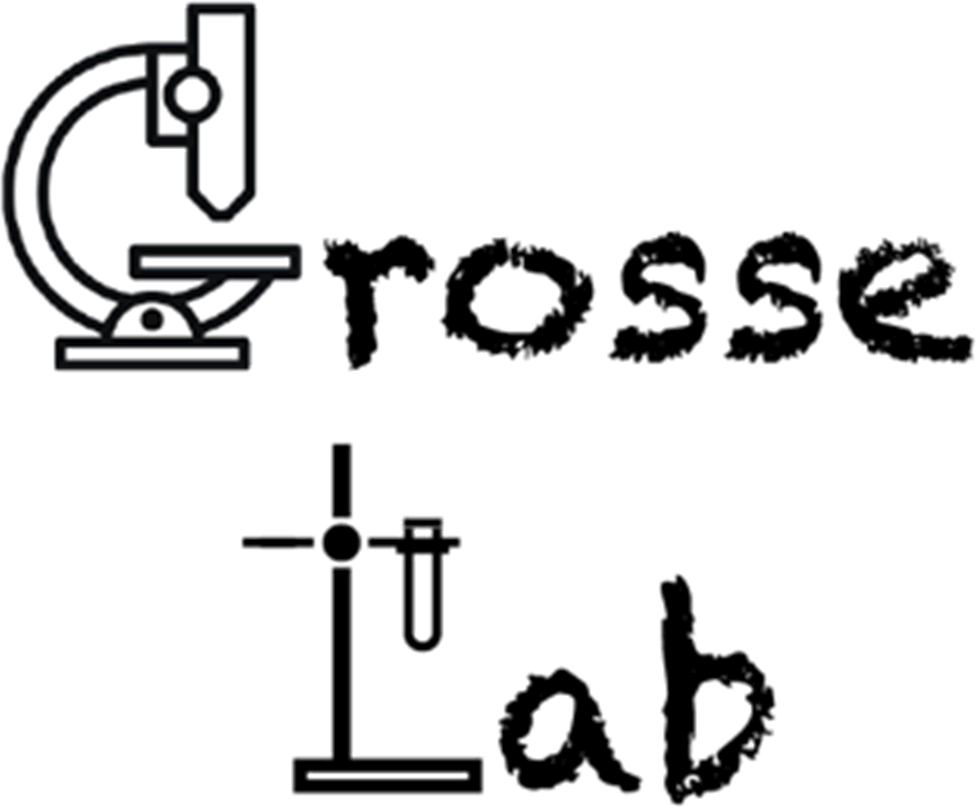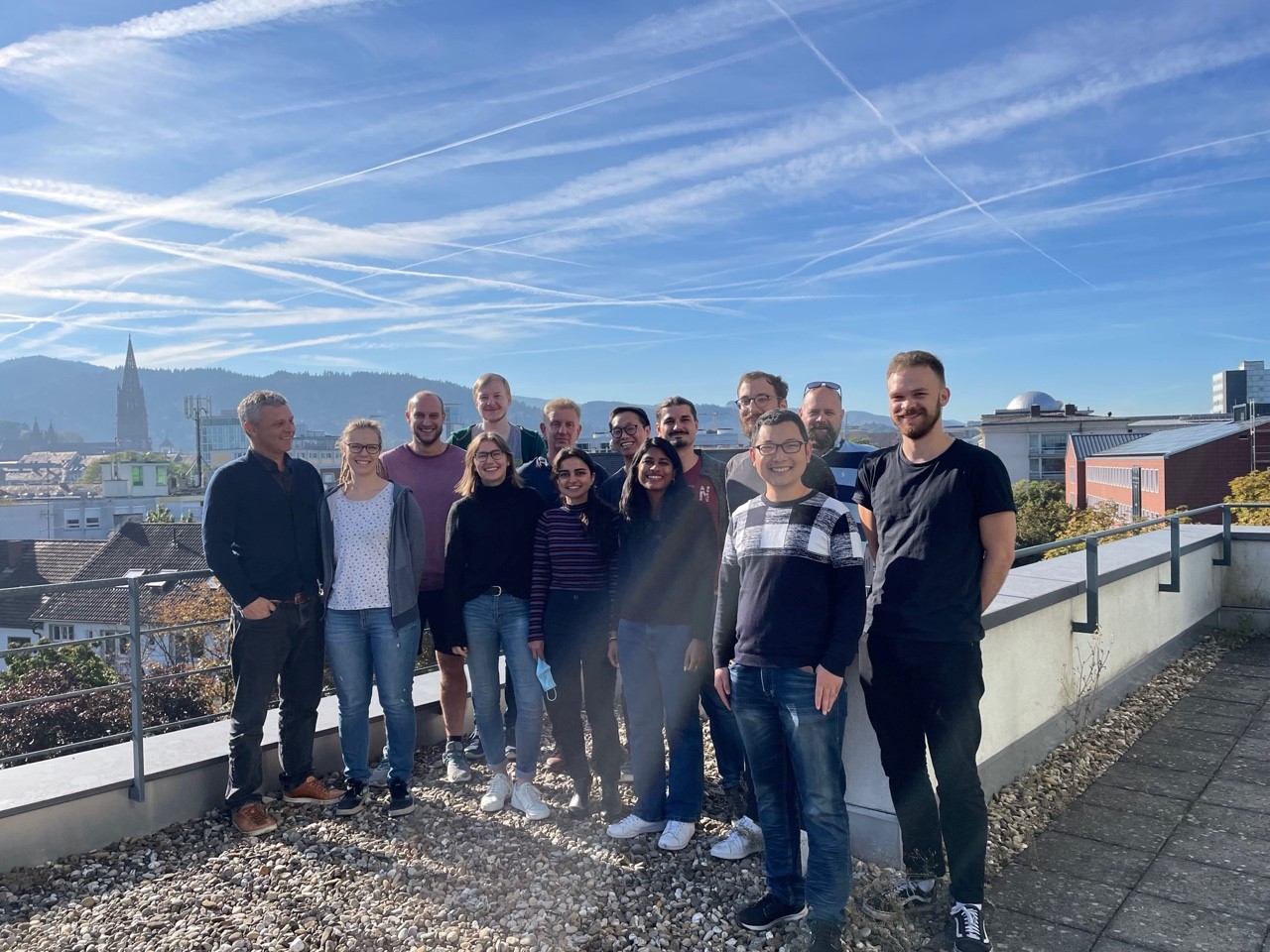AG Grosse


I. Cytoskeletal Regulation of Invasive Cell Migration
Our group has a long-standing interest in invasive cancer cell migration. In particular, we study the role of the actin cytoskeleton and how deregulation of actin dynamics impacts on invasive migration. Here we aim to identify novel concepts for pharmacological targeting to interfere with actin-regulating factors such as actin nucleation and assembly proteins. Many of these actin assembly factors are under the control of Rho-GTPase signaling. The largest family of actin nucleators are the formin family of proteins. We are studying the signal-regulation of formins and their role in cancer cell invasion, both, from a cytoskeletal as well as gene regulatory aspect. In the latter case, the actin-controlled SRF transcriptional cofactor MRTF is a key factor in translating cellular actin dynamics into gene expression essential for cell adhesion and migration.
Key Papers:
1. Frank D, Moussie JC, Ulferts S, Lorenzen L, Schwan C, Grosse R (2023) Vesicle-Associated Actin Assembly by Formins Promotes TGF?-Induced ANGPTL4 Trafficking, Secretion and Cell Invasion. Adv Sci (Weinh), 10, e2204896, 1-9
2. Hinojosa LS, Holst M, Baarlink C, Grosse R (2017) MRTF transcription and Ezrin-dependent plasma membrane blebbing are required for entotic invasion. J Cell Biol, 216, 3087-95
3. Wang Y, Arjonen A, Pouwels J, Ta H, Pausch P, Bange G, Engel U, Pan X, Fackler OT, Ivaska J, Grosse R (2015) Formin-like 2 Promotes β1-Integrin Trafficking and Invasive Motility Downstream of PKCα. Dev Cell, 34, 475-83
4. Brandt DT, Baarlink C, Kitzing TM, Kremmer E, Ivaska J, Nollau P, Grosse R (2009) SCAI acts as a suppressor of cancer cell invasion through the transcriptional control of β1-integrin. Nat Cell Biol, 11, 557-68


Formin Domain Organization and Regulation | Formins are multidomain proteins. The FH2 (formin homology 2) domain is highly conserved within the formin family and polymerizes F-actin. The FH1 domain is required for (monomeric) G-actin recruitment. The formin is rendered inactive through an intramolecular interaction between the DAD (diaphanous autoinhibitory domain) and the DID (diaphanous inhibitory domain). Active Rho GTPases such as Rho, Rac1, CDC42, or Rif trigger formin activity through release of autoinhibition. Further signals such as lipidation, farnesylation, or phosphorylation have been shown to regulate activation and localization (from Grikscheit and Grosse, Trends in Biochemical Sciences, 2016).
II. Regulation and Functions of Nuclear Actin Dynamics
NEWS: Check out our latest review and poster - Journal of Cell Science at a Glance.
Part of our research aims at understanding the functions of nuclear assembly and dynamics in somatic cells. We previously identified a nuclear actin cytoskeleton that forms in response to extracellular signals and calcium elevations or during cell spreading or extit of mitosis. Hence, different stimuli drive distinct nuclear actin events. Work in our laboratory aims at further elucidating the molecular players and mechanisms on the one hand and the functional consequences for nuclear organization and cellular behavior such as differentiation or proliferation on the other. Efforts in the laboratory aim to decipher the physiological ligands and their nuclear receptors as well as the functional consequences of nuclear actin assembly for chromatin organization and genome maintenance. In addition, we are studying the role of nuclear actin assembly during cancer cell migration. Recently, we could identify formin-mediated nuclear actin assembly at androgen receptors in order to form transcriptional condensates required for androgen signalling. These investigtions shall pave the way for new therapeutic concepts that may target factors controling nuclear actin dynamics.
Key Papers:
1. Knerr J, Werner R, Schwan C, Wang H, Gebhardt P, Grötsch H, Caliebe A, Spielmann M, Holterhus PM, Grosse R, Hornig NC (2023) Formin-mediated nuclear actin at androgen receptors promotes transcription. Nature, 617, 616-22
2.Wang Y, Sherrard A, Zhao B, Melak M, Trautwein J, Kleinschnitz EM, Tsopoulidis N, Fackler OT, Schwan C, Grosse R (2019) GPCR-induced calcium transients trigger nuclear actin assembly for chromatin dynamics. Nat Commun, 10, 5271, 1-9
3. Baarlink C, Plessner M, Sherrard A, Morita K, Misu S, Virant D, Kleinschnitz EM, Harniman R, Alibhai D, Baumeister S, Miyamoto K, Endesfelder U, Kaidi A, Grosse R (2017) A transient pool of nuclear F-actin at mitotic exit controls chromatin organization. Nat Cell Biol, 19, 1389-99
4. Plessner M, Melak M, Chinchilla P, Baarlink C, Grosse R (2015) Nuclear F-actin formation and reorganisation upon cell spreading. J Biol Chem, 290, 11209-16
5. Baarlink C, Wang H, Grosse R (2013) Nuclear Actin Network Assembly by Formins Regulates the SRF Coactivator MAL. Science, 340, 864-7
Actin and Chromatin during Cell Division | Fibroblasts labelled for endogenous actin (green) and chromatin (red) undergoing mitosis (from Baarlink et al., NCB, 2017).
III. Optogenetic Control of the Actin Cytoskeleton
We are continuing our efforts in developing and applying novel tools to control cytoskeletal effects and functions using optogenetics and live cell imaging. Such light-regulatable tools shall be useful to spatiotemporally manipulate and study specific actin-dependent effects for cell behavior such as cell division and migration. These studies will provide a better understanding on the functions of actin-regulating factors in living cells.
Key Papers:
1. Baarlink C, Wang H, Grosse R (2013) Nuclear actin network assembly by formins regulates the SRF coactivator MAL. Science, 340, 864-67
2. Baarlink C, Plessner M, Sherrard A, Morita K, Misu S, Virant D, Kleinschnitz EM, Harniman R, Alibhai D, Baumeister S, Miyamoto K, Endesfelder U, Kaidi A, Grosse R (2017) A transient pool of nuclear F-actin at mitotic exit controls chromatin organization. Nat Cell Biol, 19, 1389-99
3. Grobe H, Wüstenhagen A, Baarlink C, Grosse R, Grikscheit K (2018) A Rac1-FMNL2 signaling module affects cellcell contact formation independent of Cdc42 and membrane protrusions. PLoS One, 13, 1-1.
4. Grikscheit K, Frank T, Wang Y, Grosse R (2015) Junctional actin assembly is mediated by Formin-like 2 downstream of Rac1. J Cell Biol, 209, 367-76

Light-regulated nuclear export of Cofilin | Left: Cofilin-1 fused to LOV2-Jα containing a light-regulatable nuclear export sequence (LEXY). Right: Fibroblasts labelled for endogenous nuclear actin expressing Opto-Cofilin. The green bar indicates 488 nm illumination to activate Opto-Cofilin and actively induce nuclear export (from Baarlink et al., NCB, 2017; for LEXY module, please see Niopek et al., Nat. Comm., 2016).
Lab pictures









